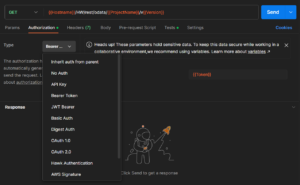When using any type of custom authentication in runtime, for example to support OAuth2 authentication mechanism, make sure the Authentication Type is correctly set in the Authorization header parameters.
For instance, when using Postman for API testing, go to the Authorization Tab, and set:
- Authentication Type with ‘Bearer Token’
- Token as your own token provided by your identity provider
The default authentication type in any browser is Basic Credentials / Basic Authentication, so a custom authentication will not work when invoking OData services through the browser.
If you find issues connecting to your API using Custom Authentication reach out to the product support team.


